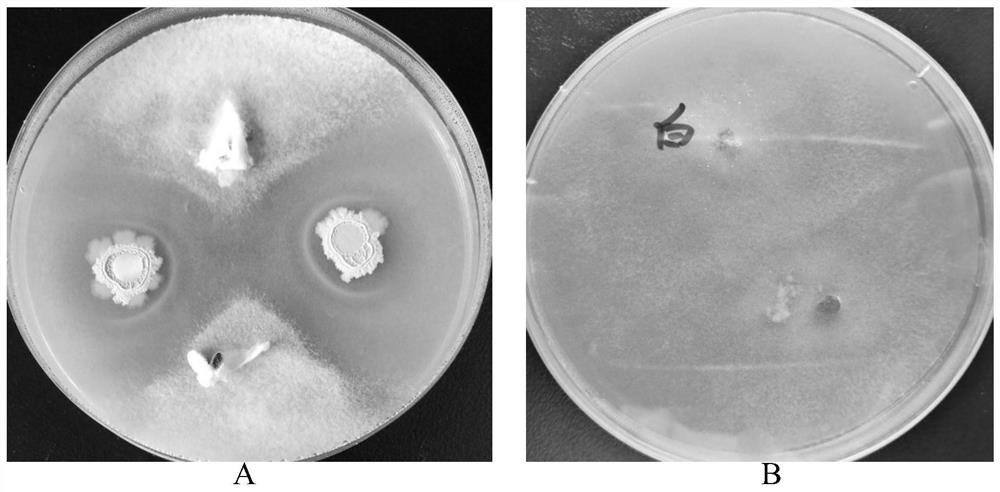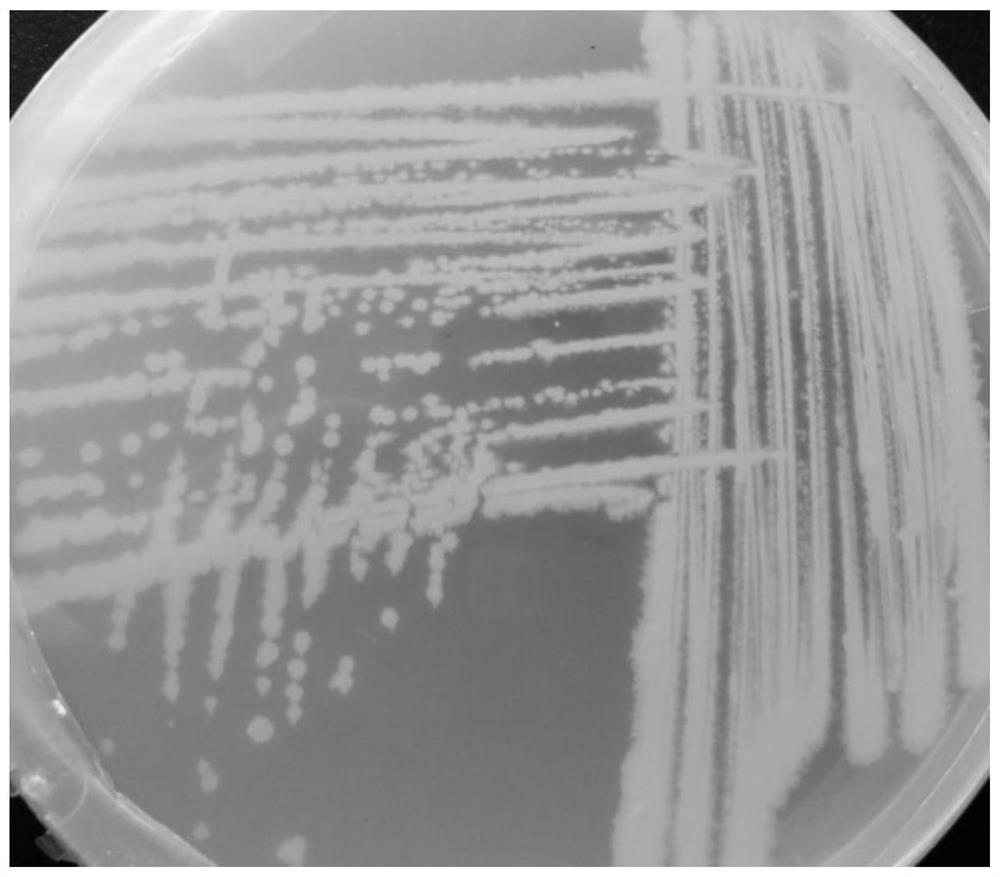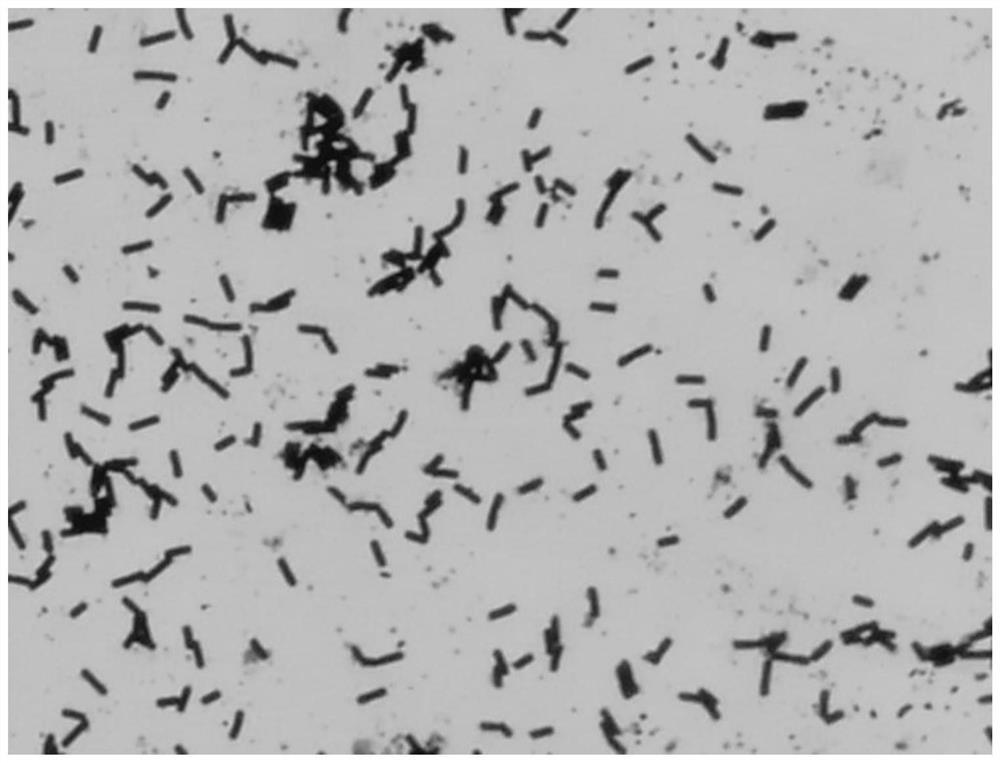Bacillus subtilis tkm-1 and its application
A Bacillus subtilis and bacteria agent technology, applied in Bacillus subtilis TKM-1 and its application fields, can solve the problems of soil, water and air pollution, easy damage to the surrounding ecological environment, increase of pesticide residues, etc., to prevent rot and lesions The effects of expansion, less drug resistance, and smaller lesions
- Summary
- Abstract
- Description
- Claims
- Application Information
AI Technical Summary
Problems solved by technology
Method used
Image
Examples
Embodiment 1
[0039] Example 1 Isolation and Identification of Bacillus subtilis TKM-1
[0040] 1. The bacterial strain TKM-1 that can prevent and treat apple rot disease in the present invention is collected from an apple plantation in Xiaosigou Town, Pingquan City, Hebei Province. It is isolated from the lesion sample by conventional methods during the process of isolating the pathogen of apple rot disease. of. Select tissue blocks with lesions, disinfect the surface with alcohol and saline, and wash with sterile water several times. After the surface of the tissue is dried, put the tissue bacteria solution on the surface of the PDA plate and cultivate it in a 28°C incubator. Observe once a day and record the surface changes of the plate. During the growth process, fungal hyphae and bacteria appeared at the same time, and the bacterial colonies that inhibited the fungi and formed an inhibition zone were picked for purification and culture, and activated with LB medium, and placed in a 4°...
Embodiment 2
[0052] Embodiment 2 Bacillus subtilis is measured to the inhibitory rate of rot pathogen
[0053] The inhibitory effect of Bacillus subtilis TKM-1 on the pathogenic bacteria of apple rot was detected by the plate confrontation method, and the determination method was the same as that of step 2 in Example 1. The pathogen of apple rot disease, Valsa mali, was used to screen the diseased plant samples. Through multiple parallel experiments, the inhibition rate of the strain Bacillus subtilis TKM-1 on apple rot is shown in Table 1. The zone of inhibition of Bacillus subtilis TKM-1 against pathogenic bacteria see Figure 4 .
[0054] Table 1 obtains the inhibitory rate to the pathogenic bacteria of apple rot disease through three parallel tests
[0055]
Embodiment 3
[0056] Embodiment 3 Bacillus subtilis TKM-1 aseptic filtrate measures the inhibitory rate to rot pathogenic bacteria
[0057] Preparation of fermentation filtrate: Inoculate Bacillus subtilis TKM-1 in a 250mL Erlenmeyer flask containing 100mL LB liquid medium, shake at 30°C for 24-48h to OD 600 =2.65, after the fermented liquid obtained was centrifuged at 10,000 r / min for 10 min, the supernatant was filtered with a 0.22 μm microporous membrane to obtain a sterile filtrate.
[0058] Use an Oxford cup to reserve two holes on the PDA plate. The distance between the two holes and the inoculation method of pathogenic bacteria are the same as in step 2 in Example 1. Take 100 μL of sterile filtrate and add it to the hole. For the control test, use sterile water instead of the filtrate and incubate at 28°C. After 4 days, the antibacterial effect of the filtrate was observed, and the diameter of the colony was measured to calculate the antibacterial rate. Three groups of parallel expe...
PUM
 Login to view more
Login to view more Abstract
Description
Claims
Application Information
 Login to view more
Login to view more - R&D Engineer
- R&D Manager
- IP Professional
- Industry Leading Data Capabilities
- Powerful AI technology
- Patent DNA Extraction
Browse by: Latest US Patents, China's latest patents, Technical Efficacy Thesaurus, Application Domain, Technology Topic.
© 2024 PatSnap. All rights reserved.Legal|Privacy policy|Modern Slavery Act Transparency Statement|Sitemap



